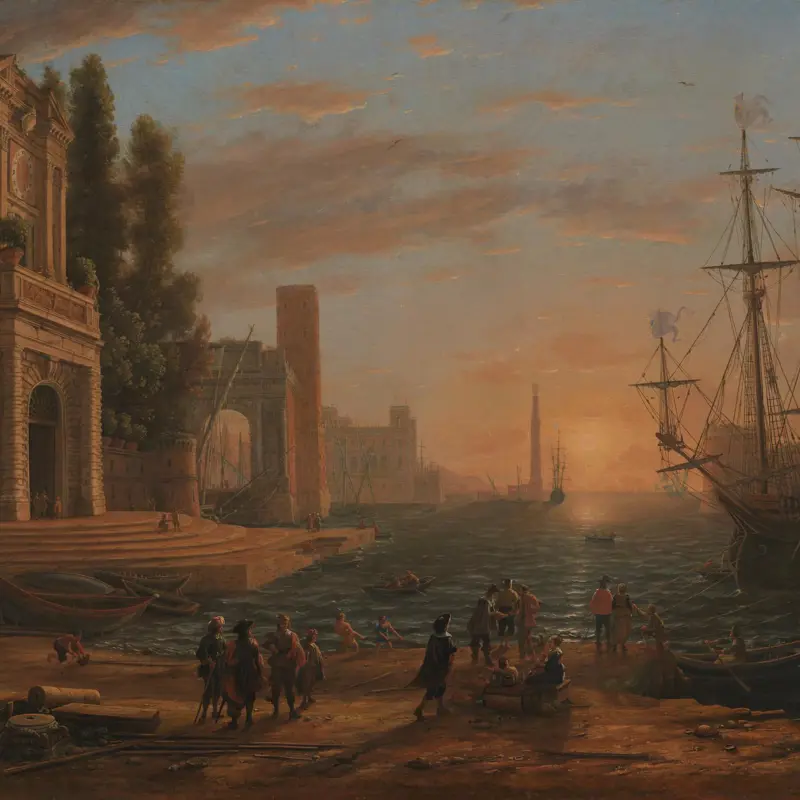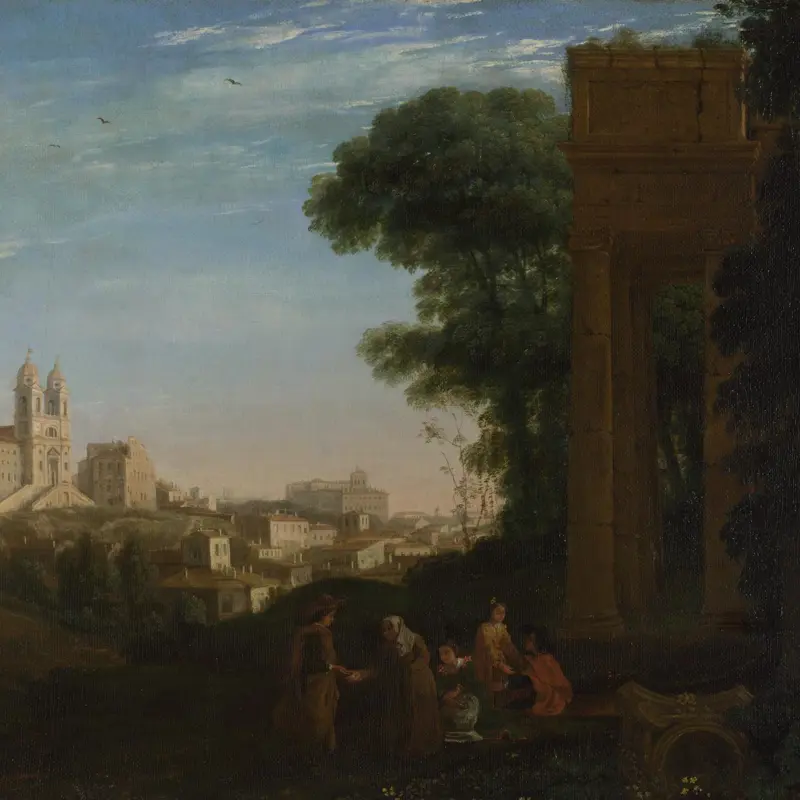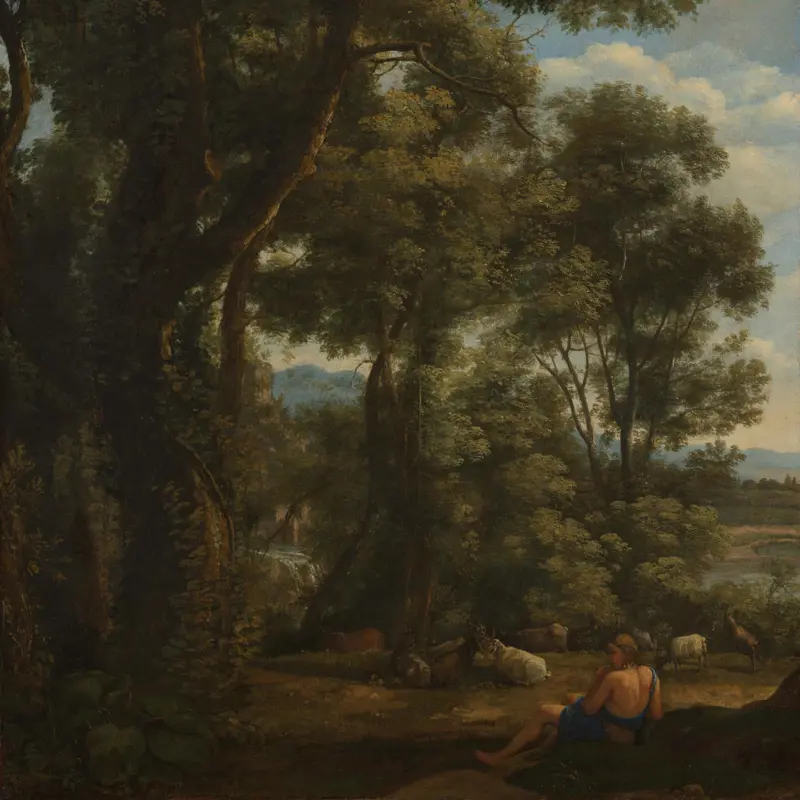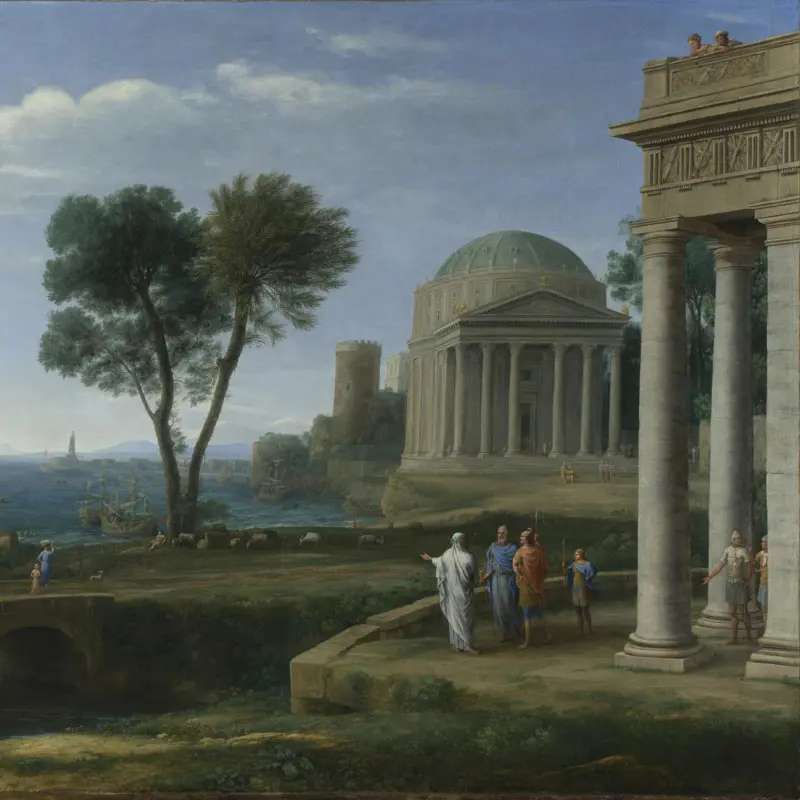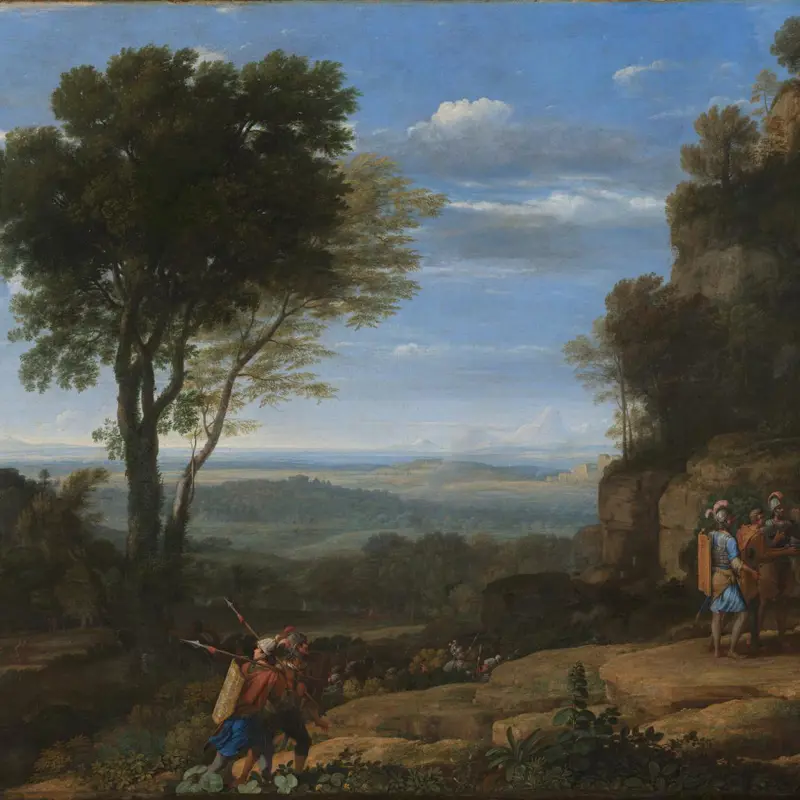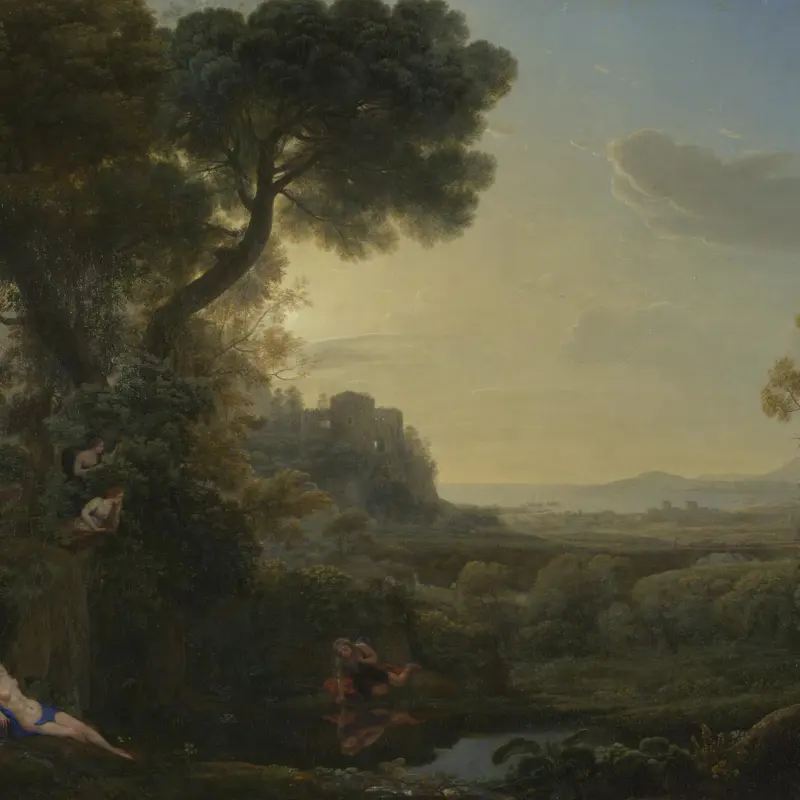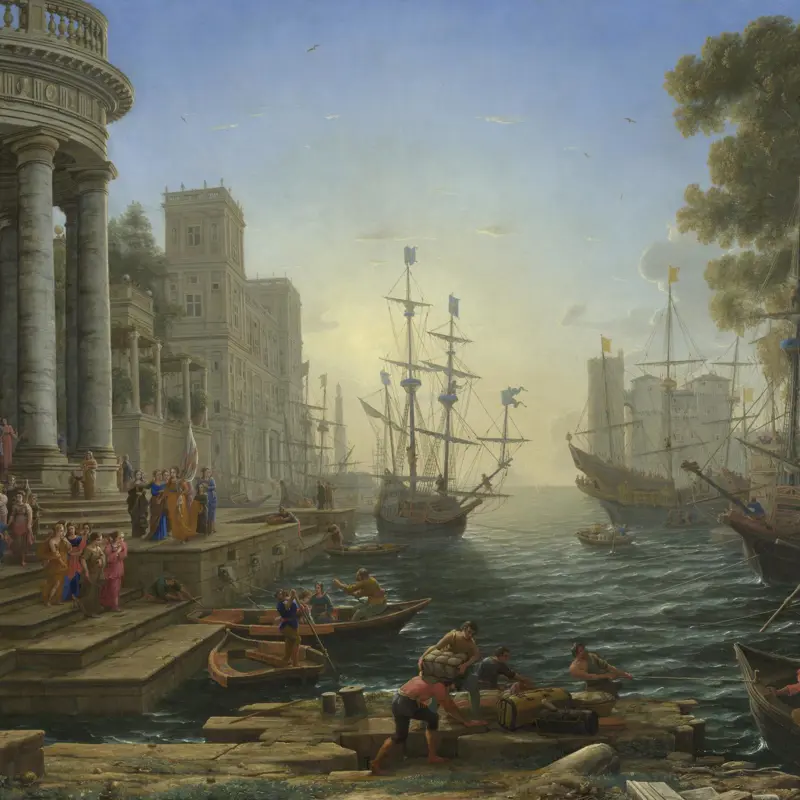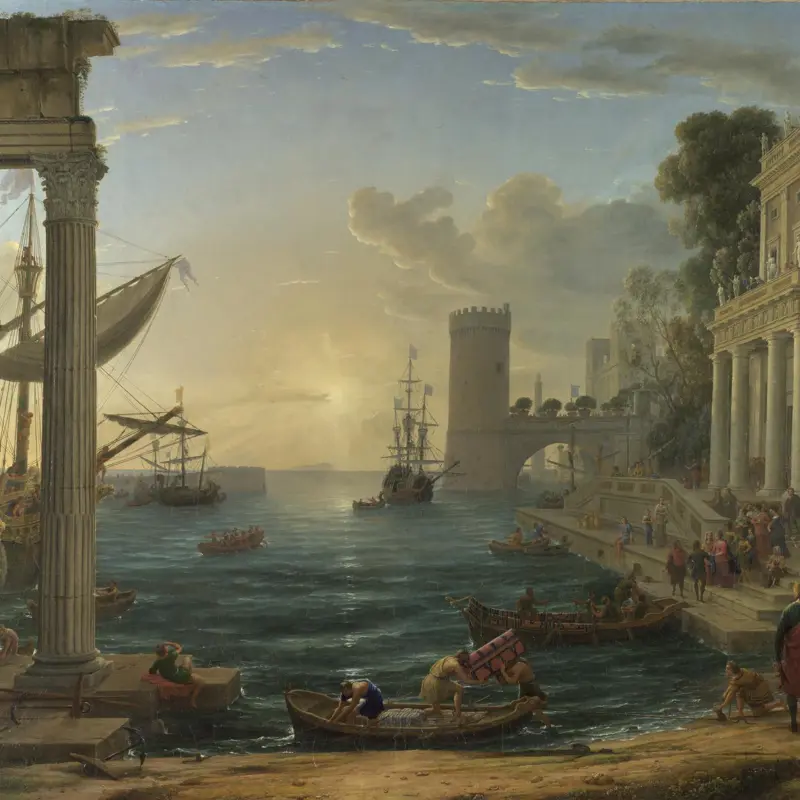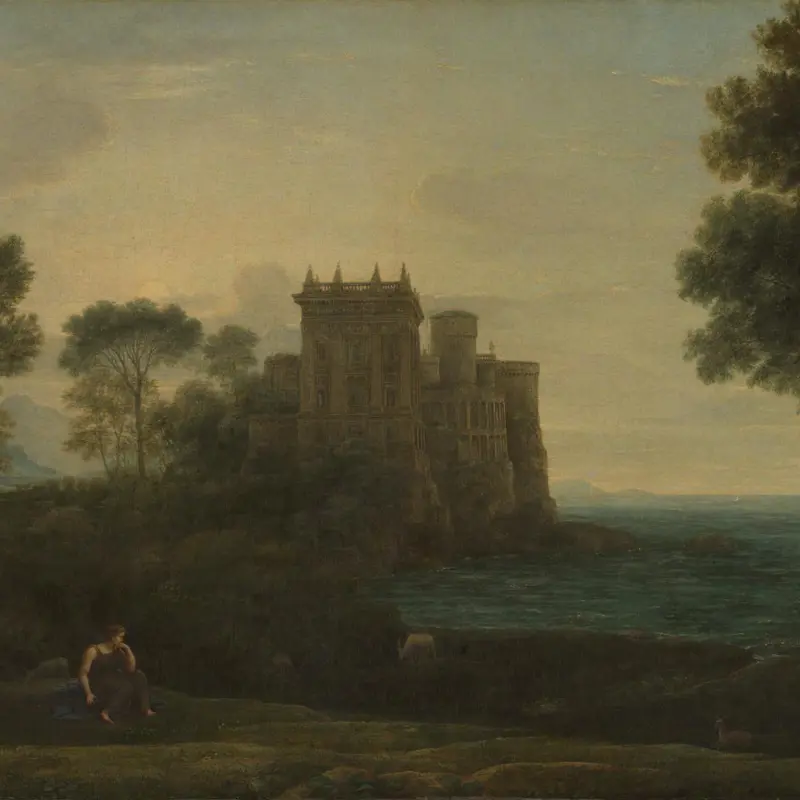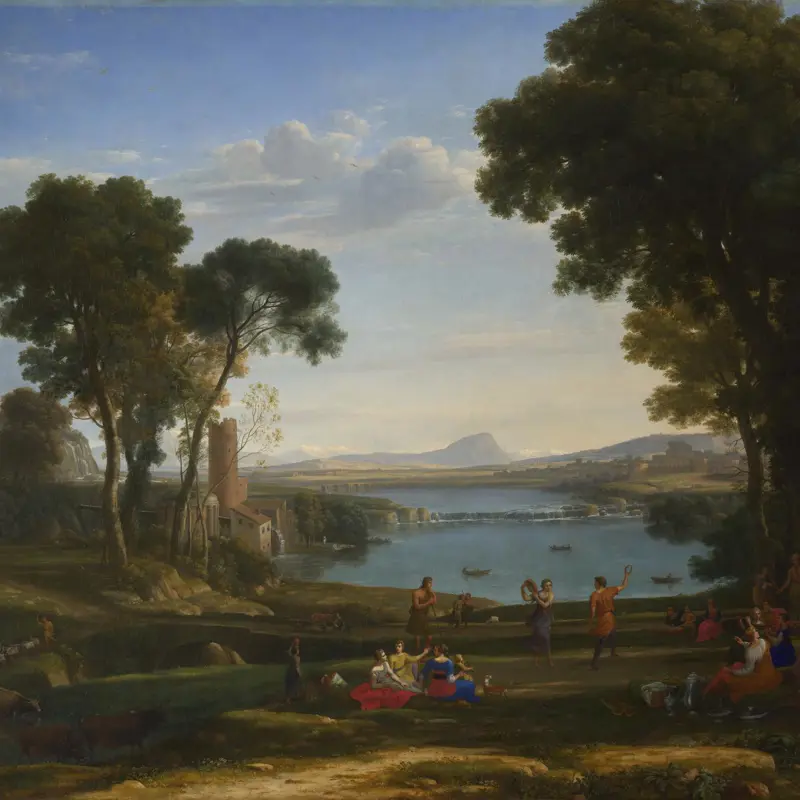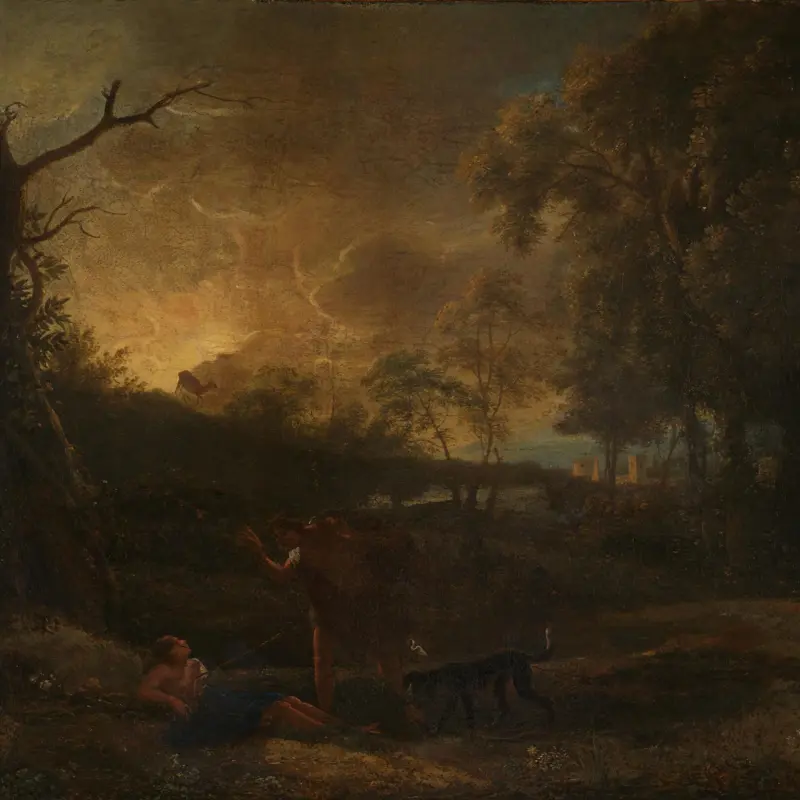Claude, 'Landscape with Hagar and the Angel', 1646
About the work
Overview
Claude illustrates the Old Testament story of Hagar, setting it in a tranquil landscape bathed in hazy sunlight. Hagar is an Egyptian servant girl who gives birth to Abraham’s child and runs away after quarrelling with Abraham’s childless wife, Sarah. Claude captures Hagar’s suffering and despair: having run out of water in the wilderness, she has left her son, Ishmael, under a bush and is praying for God’s salvation. In the Bible, this scene is set in the desert, but Claude depicts a verdant landscape that resembles the countryside around Rome.
According to the story, an angel appears to Hagar and gives her water. However, Claude shows a substantial river in the background. Pointing towards a distant town, the angel encourages Hagar to return to Sarah and Abraham. With his other hand, he points towards her, conveying God’s promise that Ishmael will become a great leader.
Key facts
Details
- Full title
- Landscape with Hagar and the Angel
- Artist
- Claude
- Artist dates
- 1604/5? - 1682
- Date made
- 1646
- Medium and support
- oil on canvas, mounted on wood
- Dimensions
- 52.2 × 42.3 cm
- Inscription summary
- Signed; Dated
- Acquisition credit
- Presented by Sir George Beaumont, 1828
- Inventory number
- NG61
- Location
- Room 29
- Collection
- Main Collection
- Previous owners
- Frame
- 18th-century English Frame
Provenance
Additional information
Text extracted from the ‘Provenance’ section of the catalogue entry in Humphrey Wine, ‘National Gallery Catalogues: The Seventeenth Century French Paintings’, London 2001; for further information, see the full catalogue entry.
Exhibition history
-
2012Turner Inspired: In the Light of ClaudeThe National Gallery (London)14 March 2012 - 5 June 2012
-
2014John Constable: The Making of a MasterVictoria and Albert Museum20 September 2014 - 11 January 2015
Bibliography
-
1829
J. Smith, A Catalogue Raisonné of the Works of the Most Eminent Dutch, Flemish, and French Painters: In Which is Included a Short Biographical Notice of the Artists, with a Copious Description of Their Principal Pictures […], 9 vols, London 1829-1842
-
1845C.R. Leslie, Memoirs of the Life of John Constable Esq., RA, London 1845
-
1884Mme Pattison, Claude Lorrain, sa vie et ses oeuvres, Paris 1884
-
1924W.G. Constable, 'The Foundation of the National Gallery', The Burlington Magazine, XLIV/253, 1924, pp. 158-72
-
1946Martin Davies, National Gallery Catalogues: French School, London 1946
-
1957Martin Davies, National Gallery Catalogues: French School, 2nd edn (revised), London 1957
-
1960M. Röthlisberger, 'The Subjects of Claude Lorrain's Paintings', Gazette des beaux-arts, LV, 1960, pp. 209-24
-
1961M. Röthlisberger, Claude Lorrain: The Paintings, London 1961
-
1961M. Kitson, 'The Relationship Between Claude and Poussin in Landscape', Zeitschrift für Kunstgeschichte, XXIV/2, 1961
-
1962M. Levey, 'A Claude Signature and Date Revealed after Cleaning', The Burlington Magazine, CIV, 1962, pp. 390-1
-
1962M. Kitson, L'ideale classico del seicento in Italia e la pittura di paesaggio (exh. cat. Palazzo dell'Archiginnasio, 8 September - 11 November 1962), Bologna 1962
-
1975M. Röthlisberger, L'opera completa di Claude Lorrain, Milan 1975
-
1978M. Kitson, Claude Lorrain: Liber Veritatis, London 1978
-
1989H. Langdon, Claude Lorrain, Oxford 1989
-
1994H. Wine, Claude: The Poetic Landscape (exh. cat. The National Gallery, London, 26 January - 10 April 1994), London 1994
-
1995P. Bishop, An Archetypal Constable: National Identity and the Geography of Nostalgia, London 1995
-
2001H. Wine, National Gallery Catalogues: The Seventeenth Century French Paintings, London 2001
-
2001
C. Baker and T. Henry, The National Gallery: Complete Illustrated Catalogue, London 2001
Frame
Dating from the end of the eighteenth century to the early nineteenth century, this English panel frame is crafted from pinewood and gilded. It features corner cartouches with a fleur-de-lis motif and scrolling foliage with flowers on either side, set on a hazzled background. Plain gilt panels are present in between, and French acanthus leaves adorn the sight edge.
Over time, the frame underwent various alterations, including the addition of a glazing door. By 2023, the frame had been fully restored to its original state.
Sir George Beaumont gifted his collection as part of a plea to Parliament to buy John Julius Angerstein’s paintings for the creation of a National Gallery, and he succeeded. However, he retrieved Claude’s Landscape with Hagar and the Angel, which he found he could not be without. He had a special cover made for it, probably in leather, so that it could accompany him on his travels. The painting was returned to the Gallery after his death. Beaumont named his framemaker, David Ross at Portland Street, in correspondence, and noted a preference for his designs, which typically had decorative corners with plain sections in between.
About this record
If you know more about this work or have spotted an error, please contact us. Please note that exhibition histories are listed from 2009 onwards. Bibliographies may not be complete; more comprehensive information is available in the National Gallery Library.

